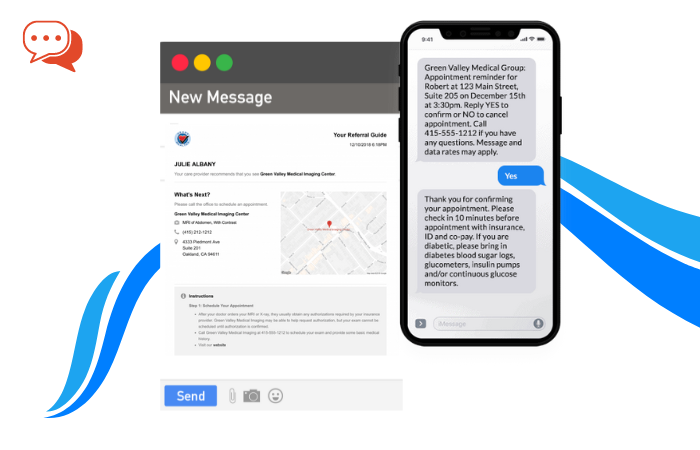Did you know filing costs an average of $20.00 per document
 When it comes down to improving the company healthcare IT systems and the bottom-line, one would be hard pressed to find a simpler solution than adhering to the adage “less is more.”
When it comes down to improving the company healthcare IT systems and the bottom-line, one would be hard pressed to find a simpler solution than adhering to the adage “less is more.”
Increased office management costs are directly connected to, amongst other factors, continued, heavy reliance on paper usage.
Statistics reveal that the number of pages consumed in U.S. offices is going up at a startling rate of 20% per year (K2 Enterprises) and additional research reveals that the health care industry spends twice as much time with paper than any other industry (IDC).
Want to hear something shocking? Were you aware of the fact that printer ink costs more, per ounce than a bottle of Chanel No. 5 (SF Chronicle)? Pretty crazy, huh? Yet, while astonishing in itself, this statistic chiefly serves to demonstrate the notion that reliance on printing and paper use (ex. Patient referrals and insurance authorizations) is a costly addiction with the impact of associated expenses going far beyond the bloated cost of printer ink.
Embracing a system focused upon storage and transmission of data through electronic means would not only decrease cost but also heighten security and increase productivity for organizations handling high levels of paperwork.
Price of Paper
The price tag associated with paper comes coupled with an array of factors directly linked to office productivity. Filing, alone, accounts for a sizeable amount of office debt.
Consider the following statistics (Paperless Project):
• Filing costs average about $20.00 per document.
• Every 12 filing cabinets require an additional employee to maintain.
• Every misfiled document costs firms $125 in lost productivity
If this one office ritual can be spotlighted to illustrate how a single, paper-based, daily activity can quickly eat away at a company’s health systems budget, try to imagine all the other tasks a company conducts on a regular basis that involve paper-based documentation. The list would seem never-ending.
The level of repetition and redundancy associated with office management systems reliant upon the use of physical documentation is, equally, worthy of investigation. Did you know that the typical office worker makes 61 trips per week to the fax machine, printer, and copier? Or that an average of 4 weeks is lost each year waiting on misfiled, mislabeled, untracked or lost documents? (Gartner)
Couldn’t a majority of these tasks be circumvented through the implementation of, more sophisticated, electronic management systems? I think you would agree that the answer to this question is a resounding: Yes!
Lost, misplaced, misfiled documents
Beyond issues of cost and efficiency, the use of paper-based management systems is a dicey game when it comes to issues of security. How many times have you lost your keys or, more fittingly, how many times have you misplaced a receipt? The Gartner Group estimates that 50 percent of small and medium-size businesses would go out of business within three years if lost data could not be recovered in 24 hours. Now, take into account the fact that 15% of all documents are misplaced and 7.5% are lost altogether.
 With 90% of company documents being paper, the question on “if important company documents will be lost” actually becomes a matter of “when” (K2 Enterprises). Ensuring the health system security and proper placement of sensitive documents is vital and reliance on antiquated management systems seems increasingly dangerous when taking into account organizations that deal with criminal records, proof of identity, or medical history to give a few examples.
With 90% of company documents being paper, the question on “if important company documents will be lost” actually becomes a matter of “when” (K2 Enterprises). Ensuring the health system security and proper placement of sensitive documents is vital and reliance on antiquated management systems seems increasingly dangerous when taking into account organizations that deal with criminal records, proof of identity, or medical history to give a few examples.
The awareness of the limitations and risks associated with paper-based documentation and management is growing. In fact, ninety-two percent of 300 U.S. companies participating in a survey conducted by the IDC said that “getting customers to move from print to online services is a goal they hope to initiate within 12 months.” And while an office that is entirely paperless seems unlikely, arguments for, at minimum: a decrease in paper reliance are substantial.
Audit your paper system
Conduct an investigation on your own. Ask your office manager: If you were to cut one thing from the company budget that would cut overhead and force a transition to a more secure and efficient work environment, what would it be? Don’t be surprised if they give a simple, one-word reply: paper.
What are your thoughts?
How much are you spending per month in your office? Ask your staff and let us know the results.
In the meantime, please sign up for ReferralMD’s patient referral platform, it’s free to try.
Works cited:
Gartner Inc. Web. .
IDC. Web. .
The Paperless Project. Web. .
Said, Carolyn. “Ink Inc.” San Francisco Chronicle 26 July 2004. Print.
“Totally Paperless for the Paperless Office.” K2 Enterprises. Web.











